The 1929 Buffalo Nickel’s value ranges from $1.25 for common circulated coins to over $100 for high-grade specimens. Coins without mint marks (Philadelphia) are worth around $20 in uncirculated condition, while the 1929-D (Denver) reaches approximately $45 and the 1929-S (San Francisco) about $25. Values vary significantly based on condition, mint mark, and rarity. Collectors should verify mint marks located on the reverse side and beware of counterfeits with added mint marks. While specific 1929 errors aren’t widely documented, the Buffalo Nickel series includes notable varieties like the valuable 1937-D “Three-Legged” error worth $500+.
The 1929 Buffalo Nickel represents a fascinating piece of American numismatic history, struck during the final years before the Great Depression fully took hold. While not the rarest date in the series, these coins offer surprising value potential depending on mint mark, grade, and error characteristics. Understanding what separates a dollar coin from a hundred-dollar treasure can transform how you approach these distinctive five-cent pieces designed by James Earle Fraser.
Understanding the Three 1929 Varieties and Their Base Values
The United States Mint produced Buffalo Nickels at three facilities in 1929, each leaving distinct identifying marks that significantly impact collector value today.
The Philadelphia Mint struck 36,446,000 nickels without any mint mark, making these the most common variety. Denver produced 8,370,000 pieces marked with a small “D” on the reverse beneath the buffalo, while San Francisco contributed 7,754,000 coins bearing an “S” mint mark in the same location. The lower mintage figures for Denver and San Francisco coins translate directly to higher collector premiums, particularly in better grades.
For coins in Good condition (G-4), where the date remains readable but significant wear has flattened most design details, all three varieties trade for approximately $1.25 to $1.50. This represents their base numismatic value, well above the five-cent face value but reflecting heavy circulation wear. Fine condition examples (F-12) showing moderate detail typically bring $2 to $4 depending on mint mark.
| Grade | Philadelphia (No Mark) | Denver (D) | San Francisco (S) |
|---|---|---|---|
| Good (G-4) | $1.25 | $1.25 | $1.25 |
| Fine (F-12) | $2.50 | $3.50 | $3.00 |
| Extremely Fine (EF-40) | $8.00 | $18.00 | $12.00 |
| About Uncirculated (AU-50) | $14.00 | $30.00 | $20.00 |
| Mint State (MS-60) | $20.00 | $45.00 | $25.00 |
| Mint State (MS-65) | $85.00 | $275.00 | $150.00 |
The real value acceleration occurs in About Uncirculated and Mint State grades. A 1929-D Buffalo Nickel grading MS-60 commands around $45, while the same Philadelphia issue brings $20. Premium gem examples grading MS-65 or better show even more dramatic spreads, with 1929-D specimens reaching $275 to $400 at Heritage Auctions sales throughout 2022-2023.
Premium Grades: Where Serious Value Begins
The jump from circulated to uncirculated condition represents the single largest value increase for 1929 Buffalo Nickels. Coins grading Mint State 60 through 63 retain full design details with original mint luster, though surface marks from bag handling remain visible.
Philadelphia strikes in MS-63 typically sell for $35 to $55 through major dealers as of 2023. The 1929-D becomes notably scarcer in this range, with MS-63 examples bringing $90 to $140. San Francisco coins occupy middle ground at $60 to $85 in the same grade.
Gem uncirculated specimens grading MS-65 or higher showcase exceptional eye appeal with minimal surface disturbances. A PCGS-certified MS-65 1929 Philadelphia nickel sold for $94 at a Stack’s Bowers auction in January 2023. The Denver mint mark elevates prices substantially—an NGC MS-65 1929-D brought $310 in the same auction house’s March 2023 sale.
The finest known examples reach MS-67, where population reports show extreme rarity. PCGS has certified only 12 examples of 1929 Philadelphia strikes at MS-67, with the most recent public sale recording $1,560 in 2022. For the 1929-D, just 3 coins have achieved MS-67 certification from PCGS as of early 2024, making this combination among the most challenging Buffalo Nickel dates to acquire in superb gem condition.
Full strike quality matters tremendously for premium grades. Look for complete definition in the buffalo’s head and the Native American portrait’s hair details. The high points of Buffalo Nickel designs—the bison’s shoulder and hip, plus the cheekbone and feather details on the obverse—show weakness on many specimens due to worn dies or insufficient striking pressure.
Documented Errors and Varieties Worth Hunting
Unlike some Buffalo Nickel dates famous for dramatic errors, the 1929 issue lacks widely recognized major error varieties that command thousands of dollars. However, several collectible variations and minor errors appear frequently enough to merit attention when examining these coins.
Repunched mint marks occur on both Denver and San Francisco issues when the mint mark punch was applied multiple times in slightly different positions. On 1929-D nickels, examine the “D” carefully under 5x magnification for evidence of a secondary outline beneath or beside the primary letter. Clear repunching adds $15 to $40 to typical values in circulated grades, with premium examples in AU condition bringing $75 to $125.
Die clashes happened when the obverse and reverse dies struck each other without a planchet between them, leaving incuse impressions of the opposite design. On 1929 Buffalo Nickels, clash marks most commonly appear as traces of the Native American profile visible in the field behind the buffalo, or buffalo details impressed into the obverse field. While interesting varieties, die clashes typically add only $5 to $20 to circulated coin values unless exceptionally dramatic.
Off-center strikes represent more significant errors. A 1929 Philadelphia nickel struck 10% off-center with full date visible sold for $185 in 2023 through GreatCollections. More dramatic off-center errors showing 25% to 40% displacement with complete date and partial design elements bring $400 to $800 depending on visual appeal.
Lamination errors occur when impurities in the metal alloy cause the surface to separate or peel. A 1929-S nickel with prominent lamination across the obverse face brought $95 at auction in late 2022, significantly above the $25 value for problem-free uncirculated examples.
Beware of artificially created “errors” and alterations. Adding mint marks to common Philadelphia strikes remains a persistent fraud, with forgers acid-etching or stamping “D” or “S” marks onto no-mint-mark coins. Genuine mint marks show the same depth and punch characteristics as the surrounding design elements. Suspicious mint marks that appear too shallow, inconsistent in font style, or positioned incorrectly should be authenticated by professional grading services before purchase.
The famous 1937-D “Three-Legged Buffalo” error, worth $500 to $2,500 depending on grade, occasionally causes confusion when sellers mistakenly attribute it to other dates including 1929. This dramatic variety resulted from over-polishing of the reverse die that completely removed the buffalo’s front right leg. Verify the date carefully, as genuine three-legged varieties exist only for 1937-D.
Grading Fundamentals That Impact Your Coin’s Worth
Understanding the grading standards that separate a $2 coin from a $200 specimen empowers collectors to accurately assess their 1929 Buffalo Nickels and negotiate fair prices.
The Sheldon Scale, ranging from 1 to 70, provides the standard grading framework. For Buffalo Nickels, several key diagnostic areas determine grade assignments. The date remains the primary concern—if the four digits have worn away completely, the coin grades as “dateless” and drops to bullion value around $0.75 regardless of other characteristics.
Good condition (G-4) shows a complete date with the rim separated from the design elements but heavy wear flattening most details. The buffalo appears as an outline with no interior definition of muscle or fur. The Native American portrait shows as a silhouette with the cheekbone merged into the face and individual hair braids completely worn away.
Fine grade (F-12) preserves moderate detail. About half the buffalo’s horn remains visible, and you can distinguish the shoulder hump from the hip. On the obverse, the cheekbone shows as a separate raised area, and approximately 75% of the hair braid details survive with separation between individual strands.
Extremely Fine (EF-40) retains sharp detail across most of the design. The buffalo’s horn shows nearly complete with only the tip worn smooth. Hair details remain distinct with clear separation between braids, and the ribbon bow appears well-defined. Light wear appears only on the highest points—the buffalo’s shoulder and hip, plus the cheekbone.
About Uncirculated (AU-50 through AU-58) displays original mint luster in protected areas with light wear on the high points. At AU-50, luster covers perhaps 50% of the surfaces. By AU-58, 90% or more of the original luster remains with only the slightest friction on the very highest design elements.
Mint State begins at MS-60, where no wear exists on any part of the design but numerous bag marks and contact marks detract from eye appeal. MS-63 shows moderate marks visible without magnification but acceptable overall appearance. MS-65 gems display exceptional eye appeal with only minor imperfections, typically requiring magnification to detect. MS-67 and higher represent virtually flawless coins with pristine surfaces and outstanding strike quality.
Third-party grading services like PCGS and NGC provide authenticated, encapsulated coins with consensus grades. The cost of grading ranges from $20 to $65 per coin depending on service level and turnaround time. For 1929 Buffalo Nickels, professional grading becomes economically justified for any coin potentially grading AU-55 or better, where the certification holder’s protection and grade guarantee typically add 10% to 30% to the coin’s market value.
Smart Buying Strategies and Market Opportunities
The 1929 Buffalo Nickel market offers accessible entry points for new collectors while providing enough scarcity in premium grades to challenge advanced numismatists.
For budget-conscious collectors, circulated examples in Good through Very Fine condition represent affordable type coins. Expect to pay $1.50 to $5 for nice Philadelphia strikes showing clear dates and honest wear. These pieces allow you to own a genuine piece of 1920s Americana without significant investment while you develop grading skills and market knowledge.
Mid-range collectors should focus on Extremely Fine through About Uncirculated specimens where the design’s artistic beauty becomes fully appreciable. The $15 to $40 range for Philadelphia issues in EF-40 to AU-50 grades offers excellent value, with coins showing substantial eye appeal and investment potential as entry-level collectors upgrade to these intermediate grades over time.
Advanced collectors pursuing registry sets or date-specific collections will concentrate on certified Mint State examples. The population reports from PCGS and NGC reveal that gem MS-65 or better 1929-D nickels remain genuinely scarce with fewer than 200 certified across both services combined as of early 2024. This scarcity supports strong values and appreciation potential compared to more common dates.
Auction venues provide the best opportunities for acquiring premium examples. Heritage Auctions, Stack’s Bowers, GreatCollections, and Legend Auctions regularly feature certified Buffalo Nickels with detailed photographs and bidding histories that establish transparent market values. Live auction venues allow you to examine coins in person before bidding, particularly valuable when assessing eye appeal factors that separate premium examples from technically similar but visually inferior specimens.
Online marketplaces including eBay require careful navigation due to widespread misgrading and undisclosed problems. Search specifically for “PCGS 1929 Buffalo Nickel” or “NGC 1929-D Nickel” to filter for certified coins with reliable grade assignments. Check seller feedback carefully, looking for extensive positive history specifically in coins rather than general merchandise. Compare ending prices across multiple sold listings to establish realistic values before bidding.
Local coin shops and coin shows offer hands-on examination advantages. Building relationships with reputable dealers provides access to coins before they reach public markets, often at favorable prices. Dealers appreciate knowledgeable collectors who understand grading standards and market values, leading to mutually beneficial transactions over time.
Building Your 1929 Buffalo Nickel Collection
Starting with a basic three-coin set—one example from each mint—creates an achievable goal for collectors at any budget level. In circulated grades, assembling all three varieties costs $4 to $8 total, providing satisfying completion while leaving room to upgrade individual pieces over time.
Intermediate collectors might target Extremely Fine or better examples of each mint mark, requiring a $40 to $70 investment for the complete trio. This approach showcases the design’s full beauty while remaining accessible to collectors without unlimited budgets.
Advanced strategies include pursuing matched grades across all three mints, such as three MS-64 examples displaying similar eye appeal and toning characteristics. This cohesive approach appeals to registry set collectors and demonstrates sophisticated collecting philosophy. Expect to invest $400 to $700 for a matched MS-64 set based on current market conditions.
Error and variety specialists should systematically examine Philadelphia mint rolls and bags for die clashes, laminations, and off-center strikes. While major errors remain rare, dedicating time to searching increases odds of discovering valuable anomalies selling for substantial multiples of typical values. A $100 investment in uncertified circulated coins provides material for hundreds of potential discoveries.
Storage and preservation directly impact long-term value retention. House circulated examples in individual cardboard 2×2 holders with staple-free construction to prevent surface damage. Uncirculated and Mint State coins require inert plastic holders such as Saflips or direct-fit Air-Tite capsules that eliminate PVC exposure causing green corrosion over time. Store coins in climate-controlled environments avoiding temperature extremes and humidity fluctuations that accelerate toning and environmental damage.
Never clean your Buffalo Nickels. Even gentle cleaning with soft cloths removes microscopic metal, creating hairlines that drastically reduce grades and values. Coins showing original surfaces—even with toning or dirt accumulation—trade for significantly higher prices than cleaned examples showing bright but damaged surfaces. Professional conservation services exist for truly problem coins, but most Buffalo Nickels benefit from preservation in their current state regardless of appearance.
The 1929 Buffalo Nickel combines affordability, historical significance, and meaningful scarcity in better grades—making these coins ideal for collectors ranging from beginning enthusiasts to serious investors pursuing population rarities. Whether you start with a single circulated example or pursue finest-known specimens, these distinctive American five-cent pieces reward careful study and patient collecting with both numismatic satisfaction and solid investment potential.
You may be interested:
- 1859 Indian Head Penny Coin Value Complete Errors List And No Mint Mark Worth Guide For Collectors
- 1911 V Nickel Coin Value Guide Complete Errors List And No Mint Mark Worth Today
- 1902 Dime Coin Value Complete Errors List With O S And No Mint Mark Worth Guide
- 1788 Quarter Coin Value Complete Guide Errors List And D S P Mint Mark Worth Revealed
- 1776 To 1976 Bicentennial Half Dollar Coin Value Complete Errors List And What Your D S And No Mint Mark Coins Are Actually Worth
- 1990 Penny Coin Value Errors List How D S And No Mint Mark Pennies Are Worth Thousands Of Dollars

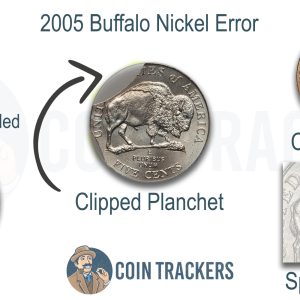
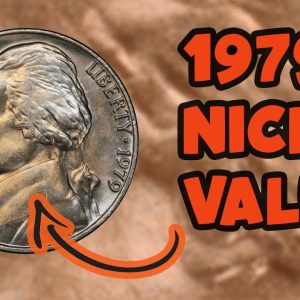
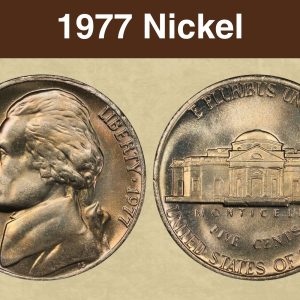
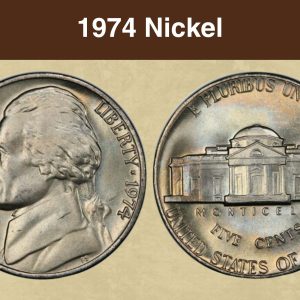
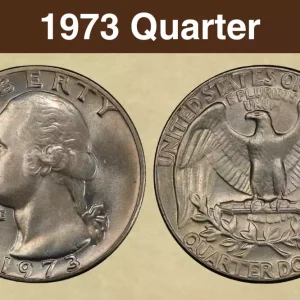
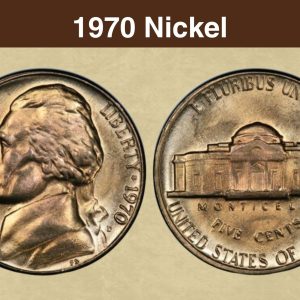
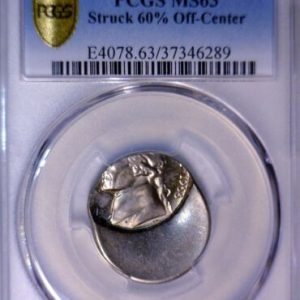
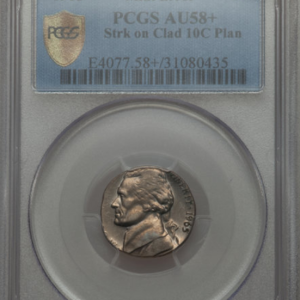
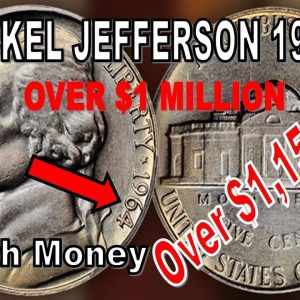
How much is a 1929 D Buffalo Nickel worth?
A 1929-D Buffalo nickel’s value depends heavily on its condition and grade, ranging from a few dollars for circulated coins to thousands for uncirculated examples, with prices as low as $1 to $4 in “good” condition and over $100 for uncirculated coins. Top collectors pay a premium for high-grade coins, with Mint State 66 examples potentially selling for over $15,000.
What makes a 1929 Buffalo Nickel rare?
So it’s a really good condition for a Buffalo nickel. And this coin sold for over. $250. Now here is a super valuable coin this is the 1929D mint mark by the way if you want to look for the mint marks
What are the common errors on Buffalo nickels?
1916/16 Buffalo Nickel Doubled Die Historical Context: The 1916/16 Doubled Die error stands out as one of the most renowned varieties within the series. A misalignment during the minting process caused the date to be stamped twice, resulting in a noticeable doubling effect.
What is the most wanted buffalo nickel?
The rarest Buffalo nickel is the 1926-S, which has the lowest mintage of the series at just 970,000 coins. Other very rare Buffalo nickels include the 1937-D “Three-Legged” variety, caused by a die polishing error, and high-grade specimens of other key dates like the 1918-D overdate and 1924-S.